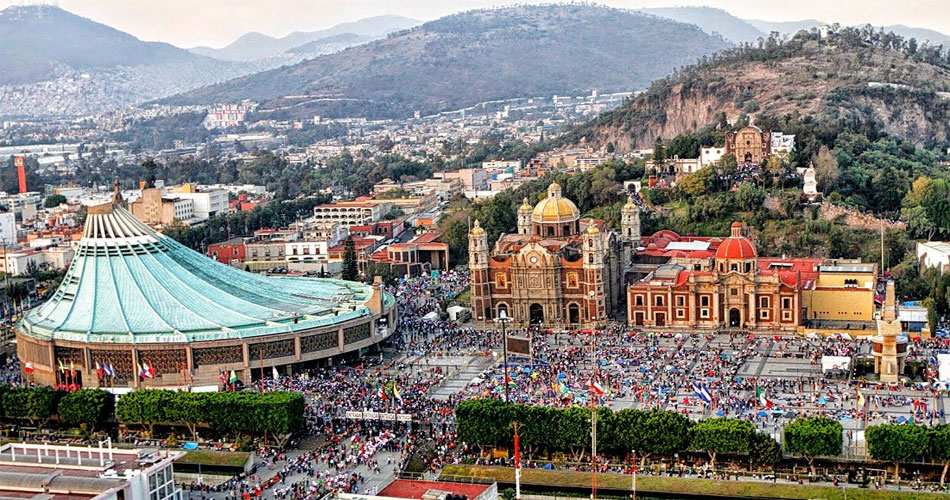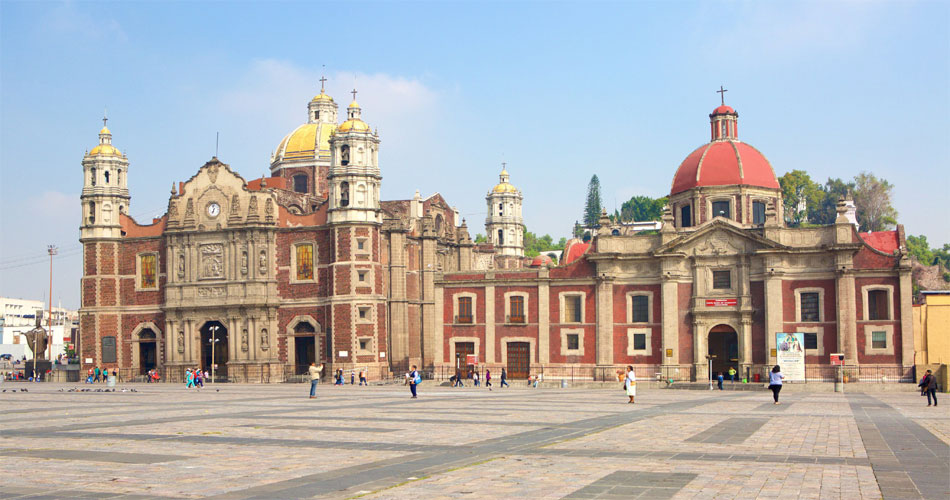Our Lady of GuadaLupe-Guadalupe Maxico
Our Lady of Guadalupe, Spanish Nuestra Señora de Guadalupe, also called the Virgin of Guadalupe, in Roman Catholicism, the Virgin Mary in her appearance before St. Juan Diego in a vision in 1531. The name also refers to the Marian apparition itself. Our Lady of Guadalupe holds a special place in the religious life of Mexico and is one of the most popular religious devotions. Her image has played an important role as a national symbol of Mexico.According to tradition, Mary appeared to Juan Diego, who was an Aztec convert to Christianity, on December 9 and again on December 12, 1531. During her first apparition she requested that a shrine to her be built on the spot where she appeared, Tepeyac Hill (now in a suburb of Mexico City). The bishop demanded a sign before he would approve construction of a church, however. Mary then appeared a second time to Juan Diego and ordered him to collect roses. In a second audience with the bishop, Juan Diego opened his cloak, letting dozens of roses fall to the floor and revealing the image of Mary imprinted on the inside of the cloak—the image that is now venerated in the Basilica of Guadalupe.

Our Lady of Guadalupe’s role in Mexican history is not limited to religious matters; she has played an important role in Mexican nationalism and identity. In 1810 Miguel Hidalgo y Costilla promoted her as the patroness of the revolt he led against the Spanish. The image of the Virgin of Guadalupe appeared on the rebels’ banners, and the rebels’ battle cry was “Long Live Our Lady of Guadalupe.” During a religious revival in Mexico in the late 19th century, preachers declared that the foundation of Mexico could be dated to the time of the apparition of Our Lady of Guadalupe, because she freed the people from idolatry and reconciled the Spanish and indigenous peoples in a common devotion. Emiliano Zapata’s peasant rebels carried the banner of Our Lady when they entered Mexico City in 1914, and, during the civil war in Mexico in 1926–29, the banners of the rebels bore her image. Her continuing significance as a religious and national symbol is attested by the hundreds of thousands of pilgrims who visit her shrine every year.

In addition to the modern-style basilica, there’s an older church that was built between 1695-1709. It continues to be a place for prayer and devotion, though the shrine’s major services are now held in the newer basilica. Angel on top of church An archangel stands guard over the Shrine of Our Lady of Guadalupe. The hill where Juan Diego received his visions can still be climbed. A pilgrim’s path bordered by lush gardens winds to its top, where another, smaller church stands. This sanctuary is guarded by a most impressive cadre of archangels, who certainly look strong enough to keep away any intruders. On feast days, it’s traditional that people approach the shrine on their knees as a sign of devotion. I didn’t see anyone doing so, but I could sense the devotion that filled people’s hearts at this beloved holy site. After visiting the shrine, the Virgin of Guadalupe was on my radar throughout Mexico. I saw her everywhere-—in simple roadside shrines and in shops, on T-shirts and candles and hanging from the rearview mirror of taxi cabs. It made me love Mexico all the more. I also saw Mary through the eyes of my Mayan and Aztec tours in Mexico. I could see the ways in which the mother goddesses of these cultures influenced the devotion to the Virgin Mary today. Religions, after all, are great recyclers of themes, stories, and traditions. And I love the way that the Virgin Mary has found a home in places throughout the world, including this city where the Aztecs once ruled.
Go Back To Home